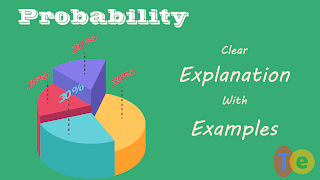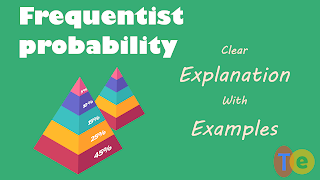Probability
Probability is another pillar that supports the statistics temple. It is the tool we use to measure and quantify randomness.
There are three common definitions of probability. These are the Axiomatic definition introduced by Kolmogorov (1933), the relative frequency definition described by von Mises (1915), and the classical definition for equally likely outcomes. Here they are.
Now please allow me to explain them one by one. Just kidding. Don’t close the video.
When learning a mathematical concept, the alien’s feeling of the math language can easily be overwhelming. Also, lots of concepts that are not particularly interesting and you probably have no idea where and when you will use it. So as you know the lack of motivation means that most of them are quickly forgotten.
Math exis to address the real-world problem, it doesn’t have to be that abstract. Here let me try to explain it in plain language: Probability is the branch of mathematics concerning numerical descriptions of how likely a random event is to occur, or how likely it is that a proposition is true.
There are two keywords in this definition: ”random event” and “numerical description”.
To understand “random event” let’s explore several examples: flipping a coin, it shows head next time is a “random event”; team A win the next game is a “random event”; Elon Musk recently shared details on Twitter about his plans to send 1 million people to Mars by 2050. Here, send 1 million people to Mars by 2050 is a “random event”.
Sum up: first, define the condition: “next time”, “next game” and “by 2050”.
Then, that could happen: show head, team A win and send 1 million people to Mars.
And it has to be random: such as there’s 50% you will see the head, team A has 60% to win the next game and the chance of sending 1 million people to Mars by 2050 is … well, we’ll see.
By the way, the random event could refer to a future event like win the next game or the event already happened we simply don’t know yet. Like the chance, you find dog’s pee on the carpet when you back home. For me, it’s 50%.
numerical description: Say you know a team has a great chance to win the next game, but can you be more specific? Actually, you can, like in our example 60% to win the next game. I know right now you probably wondering how to get that number in the real world? Well Bayes’ theorem can be used to address this problem. We will talk about it in another video.
Knowing that probability is a numerical description of a random event. Our next question is where this numerical description comes from? It is the ratio of the outcome in the event to all possible outcomes in the event.
In statistics, we normally call the set of all possible outcomes or results of the event Sample Space. For example, flipping a coin the sample space going to be {head, tail}; tossing a single six-sided die, the typical sample space is {1, 2, 3, 4, 5, 6}
It is obvious that every event has a value between zero and one since it only a subset of the sample space. The probability of something is zero means it won’t happen at all, probability is one means it must happen.
The sum of all probabilities for all possible values must equal one.
The probability of opposite or complement of an event is 1 - the probability of that event. This team has a 60% chance to win the next game equal to there is a 40% chance this team won’t win the next game (draw or lose).
These are the three famous general properties of Probability Distributions.
Back in the real world, in most cases find the complete sample space is impossible. Wich makes our prediction not that precise. However, we will never stop to explore our world and always work on improving the prediction of various events around us. So I would like to say don’t be intimidated by the pursuit of the infinity of truth. You will find joy in each step.



Comments
Post a Comment